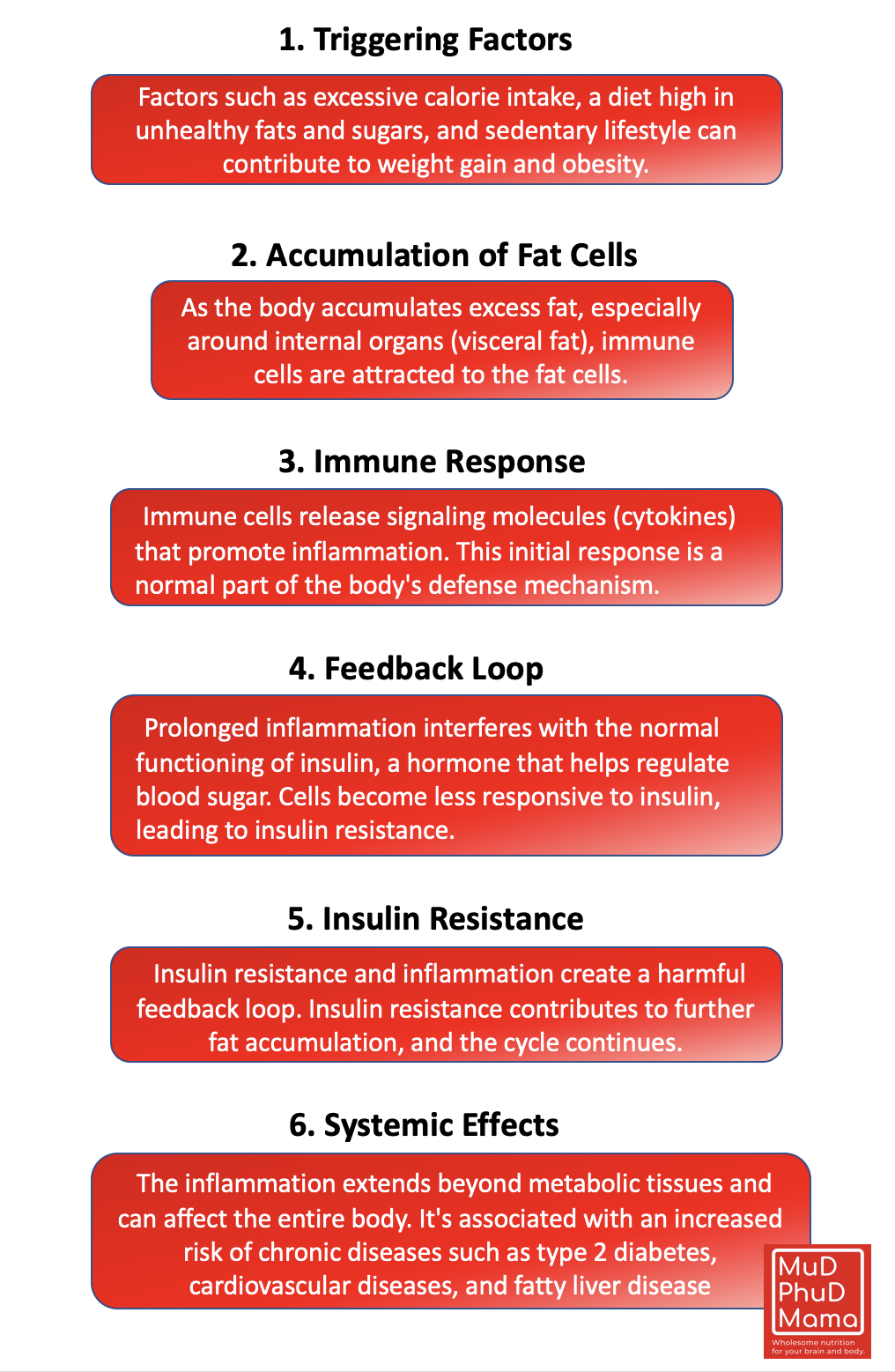In recent years, the connection between inflammation and metabolic diseases has become a focal point of research (1), shedding light on the relationship between our body’s immune response and metabolic health.
Inflammation is the body’s way of fighting off harmful things like injuries, infections, and irritants. When inflammation starts, cells send out signals that change blood vessels, making them leakier and allowing immune cells to move in and accumulate. These immune cells release substances called cytokines, chemokines, and eicosanoids to help manage the inflammation. After dealing with the threat, the body then repairs and remodels the tissue to restore normal health. However, if this process doesn’t stop properly or becomes uncontrolled, it can cause chronic inflammation. In tissues like fat, the liver, and muscles, excess fat can trigger this ongoing inflammatory response, leading to chronic inflammation that contributes to metabolic diseases such as obesity and type 2 diabetes.
Meta-Inflammation
Low-grade inflammation in metabolic tissues, known as “meta-inflammation,” is mainly caused by an excess of nutrients and metabolic stress. This triggers the infiltration of immune cells and the release of inflammatory cytokines into the tissue, which impairs glucose uptake and disrupts lipid metabolism.
Here is a step by step explanation of the process:

Fig 1. The step by step process of metainflammation.
The cascade of chronic metabolic inflammation is a complex process involving interactions between immune cells, fat tissue, and metabolic organs that eventually leads in systemic metabolic dysfunction.
Conclusion
Understanding the role of inflammation in metabolic diseases opens new possibilities for treatments. Lifestyle changes, like eating a healthy diet, exercising regularly, and managing stress, can help reduce chronic inflammation. We researchers have been exploring targeted therapies that modify inflammatory pathways as potential treatments for metabolic disorders (Fig 2). By learning more about the connections between inflammation and metabolism, we can disrupt the cycle of inflammation, leading to better metabolic health and a lower incidence of metabolic diseases in our communities.

Useful Links About Meta-Inflammation


